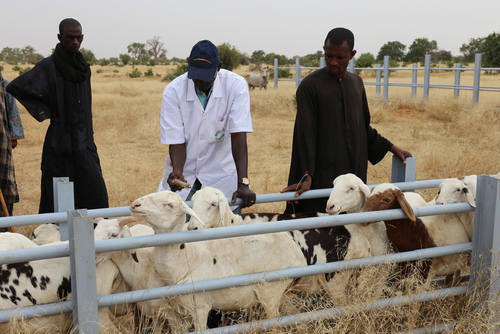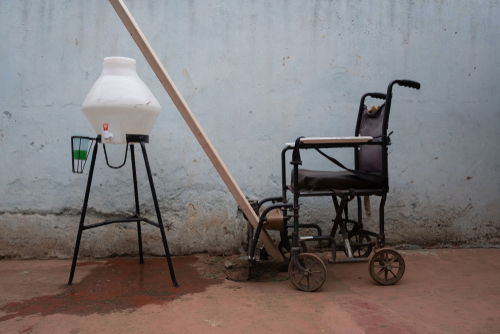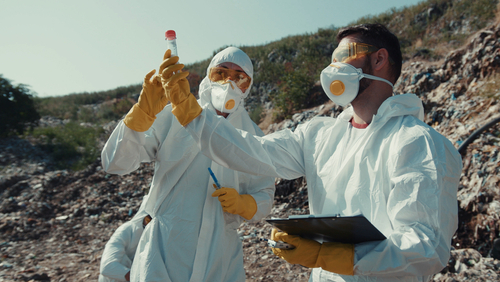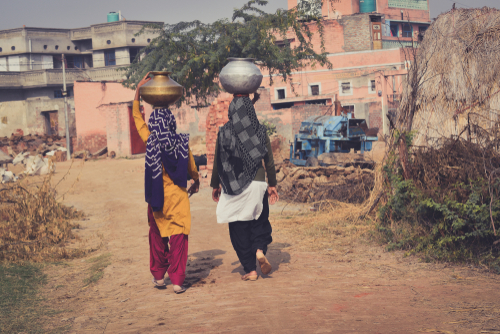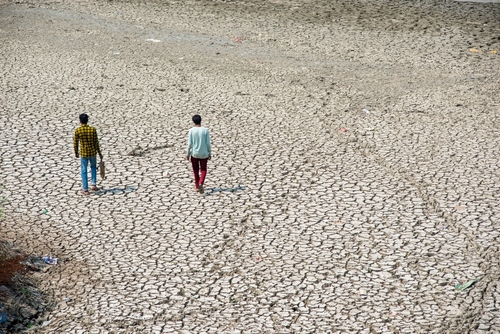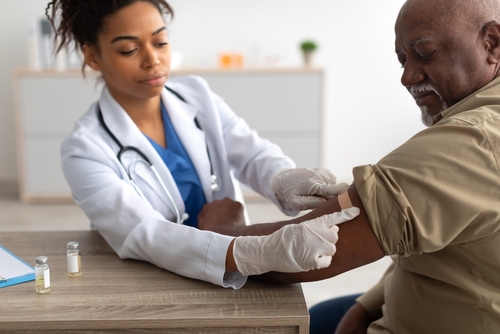October 09, 2023
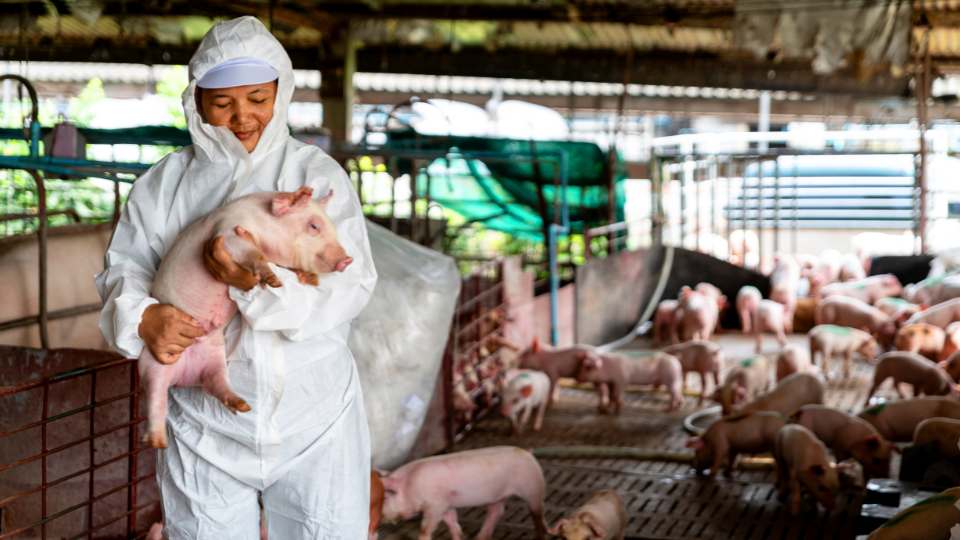
Girls in India faced greater pandemic-related learning losses than boys.
One Health Trust researcher, Arindam Nandi, co-authored a paper that used data from India’s National Family Health Survey 2019-2021 (NFHS-5) to estimate the effect of the pandemic on reading ability, schooling attainment and enrollment, and reasons for being out of school among adolescents aged 15-17 in India. The study found that girls in the post-COVID group were 2.6 percent less likely to possess the ability to read than those in the pre-COVID group. The negative effect of the pandemic on girls’ literacy was nearly twice as great among girls from rural areas than those from urban areas. Furthermore, girls in the poorest wealth quintile had a 3.1 to 3.8 percent reduction in reading ability, while boys across all wealth quintiles did not experience any significant changes in literacy because of the pandemic. Boys in both pre- and post-pandemic groups did not experience any reduction in reading ability and had an equal risk of being out of school. Remedial education programs, supported by India’s increased education budget, must target poor and marginalized communities to mitigate the gendered effects of the COVID-19 pandemic on learning losses in India. [npj Science of Learning]
AMR mitigation challenges today
An article including comments by OHT’s Ramanan Laxminarayan highlighted that AMR is increasing everywhere, however, wars and economic fallouts are pushing it down the list of priorities for many governments. The lack of data in many parts of the world paints an inconsistent and misleading picture of the true AMR burden worldwide. However, available data and information suggest high resistance to the latest antibiotics, poor mitigation of AMR worldwide, and low capacity to detect it. [Financial Times]
Livestock antibiotic use and AMR emergence are positively correlated in higher-GDP countries.
OHT’s Ramanan Laxminarayan and Thomas Van Boeckel collaborated with the EcoHealth Alliance to investigate the correlation between the emergence of novel antimicrobial-resistant (AMR) pathogens, human and livestock antimicrobial use, and country-specific travel and economic activity. The researchers’ model revealed that human per capita antibiotic consumption in 60 countries between 2006 and 2017 was slightly correlated with AMR emergence rates (incidence rate ratio = 1.04 per defined daily dose per capita (95% CI: 1.00-1.08). Overall, livestock antibiotic use and AMR emergence rates were negatively associated (IRR = 0.019) per log of kg antibiotics consumed by livestock per human capita (95% CI: 0.0017-0.51). However, accounting for the countries’ GDP and normalizing for population size showed that this was true only for countries with GDPs lower than $46,000 per capita; for countries with high GDPs ($57,000 per capita), doubling of antibiotic consumption was associated with a 39 percent (±56 percent) increase in AMR emergence rates. [Proceedings of the Royal Society B]
Temporal association between COVID-19 vaccination and unexpected vaginal bleeding
The Norwegian Institute of Public Health recently published a study investigating the association between COVID-19 vaccination and unexpected vaginal bleeding in nonmenstruating women. Among the 252 postmenopausal, 1,008 perimenopausal, and 924 premenopausal women who reported experiencing any unexpected vaginal bleeding in 2021, 45, 51, and 55 percent, respectively, stated that the bleeding occurred within 4 weeks after receiving the first and/or second dose of the COVID-19 vaccine. The age-adjusted hazard ratios (aHRs) for unexpected vaginal bleeding after the first and second dose among postmenopausal women were 3.0 and 2.2, respectively. The corresponding aHRs in perimenopausal and premenopausal women were higher at 4.2 and 3.7, and 4.7 and 4.2, respectively. Notably, approximately three-fourths of nonmenstruating premenopausal women in this study had a hormonal intrauterine device (IUD), restricting the generalizability of these findings to people with similar hormonal use. [Science Advances]
Inadequate nutrition levels among people living with HIV in Nigeria
Researchers assessed the prevalence and risk factors of malnutrition among people living with HIV (PLHIV) undergoing antiretroviral therapy (ART) at the Muhammad Shuwa Memorial Hospital (MSMH) in Borno State, Nigeria. Using a cross-sectional study design, they measured the heights and weights of 384 PLHIV accessing ART, calculated their body mass indices (BMI), and classified them by nutritional status. The prevalence of undernutrition, normal nutrition, and overnutrition was 13, 56.8, and 30.2 percent, respectively. Just over three-fourths of participants had inadequate dietary diversity, and more than one-third were considered mildly food insecure. The risk of undernutrition was greater among female PLHIV, participants aged 30 years and above and those with a low monthly income of less than 30,000 Nigerian Naira. [Clinical Epidemiology and Global Health]
Landfill leachate may disperse antibiotic resistance genes in surrounding aquatic environments.
A new study investigated the impact of the combined treatment of municipal wastewater and landfill leachate (LL) – rainwater contaminated by landfill waste and deposited externally into the local environment – on the spread of antibiotic resistance (AR) in river water. Researchers collected samples from two wastewater treatment plants (WWTPs) in northeastern Poland, one of which co-treats LL and wastewater, and identified high loads of genes conferring antibiotic resistance (ARGs) in untreated wastewater collected from both WWTPs. Furthermore, the presence of LL in WWTP1 was associated with 40 percent more microbial genera than WWTP2 (which does not co-treat LL), and the upstream and downstream river water associated with WWTP1 had a greater microbial abundance than WWTP2. The concentration of the mexF gene, which encodes multidrug efflux pumps and confers resistance to diaminopyrimidines, phenicols, and fluoroquinolones, was two orders of magnitude higher in LL than in either of the two untreated wastewater samples, highlighting LL as a reservoir of multidrug resistance that can spread through wastewater to the surrounding environment. [Journal of Environmental Management]
A social-ecological approach to manage tick-borne disease
Climatic, ecological, and anthropogenic factors are increasing the range and abundance of ticks in temperate regions of Europe, thus increasing the risk and prevalence of diseases including Lyme borreliosis, tick-borne encephalitis, and Crimean-Congo hemorrhagic fever. Because of the interplay between ticks, humans, wildlife, and domestic and farm animals, a social-ecological tick control program is being implemented in southern France. This transdisciplinary approach goes beyond medical, research, and political stakeholders to include the community in a holistic tick-borne disease prevention and management effort. [One Health]
Community engagement helped Chagas disease interventions succeed in Guatemala.
Chagas disease is a neglected tropical disease that primarily affects inhabitants of Central and South America and is transmitted via the triatomine insect. After a successful control program based on insecticide spraying left some vulnerable communities in Guatemala above the five percent control threshold, a novel vector control program was launched in the municipality of Comapa to educate residents on the disease, teach them to trap rodents and use chicken coops with integrated compost to reduce triatome infestations. An evaluation of the program found that community education paired with participatory activities supported the diffusion of these vector and parasite reservoir control innovations throughout the community. [BMC Public Health]
Global polio eradication is not likely to succeed by 2026.
The Global Polio Eradication Initiative (GPEI), launched in 1988, has reduced polio by 99 percent worldwide. Despite this monumental achievement, there are vulnerable countries such as Afghanistan and Pakistan and areas with low vaccination coverage in Africa, where circulating wild and vaccine-derived poliovirus continues to cause cases of paralysis. Injectable polio vaccines contain killed poliovirus and protect against paralytic disease but do not stop transmission. Oral polio vaccine (OPV) contains live but weakened poliovirus and prevents the disease and its transmission, even spreading immunity throughout a community to protect the unvaccinated. However, on rare occasions, the weakened virus in OPV can revert to virulence and cause illness in areas of low vaccination coverage. Because OPV is cheaper and easier to administer, it is still used in many parts of the world. The GPEI has developed novel vaccines to address this problem, but the COVID-19 pandemic, civil unrest, political instability, and indifference are cited as barriers to achieving global polio eradication by 2026. [Science]
Image from Canva

